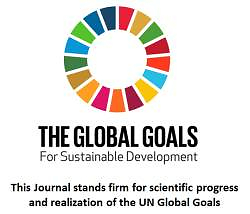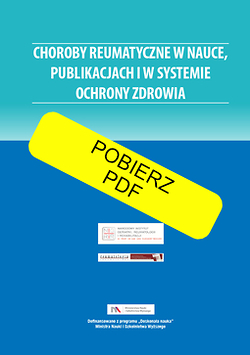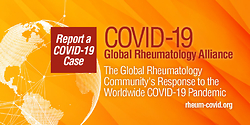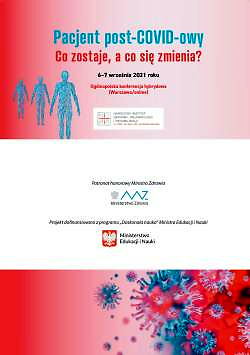|
4/2010
vol. 48
Artykuł przeglądowy
Podstawy zjawiska fluorescencji i jego wykorzystanie w medycynie
Reumatologia 2010; 48, 4: 257-261
Data publikacji online: 2010/09/21
Pobierz cytowanie
Introduction In medicine, enormous progress has been made recently in the field of diagnostics in rheumatic diseases. This progress is strongly connected with development of physics and biology. It is clearly visible in the case of laboratory tests, including immunological and visual tests such as ultrasonography [1, 2], magnetic resonance or computer tomography [3]. The visual tests have the inconvenience that they allow to find changes which are so developed to be seen with the naked eye. It is a big limitation especially in the case of diagnostics of early stages of rheumatologic diseases such as psoriatic arthritis, ankylosing spondylitis and rheumatoid arthritis and other systemic diseases of connective tissue. Besides, tests of that kind not only do not allow observation of certain changes but also prevent observation of processes that are present in single cells. That is why to have many diseases properly diagnosed biopsy is needed. And then a histopathologic test of taken biopsy specimens is needed. That method has also its disadvantages and limitations – in some cases it can lead to internal bleeding or organ damage or other complications. The histopathologic test itself is also very time-consuming and ambiguous in the case of rheumatologic diseases unlike cytology and histopathology in oncology treated as a golden diagnostic standard. Besides, the method requires skills from the investigator and finally it can turn out as subjective evaluation. And, what is more important, histopathologic view can be different from the clinical picture, especially in early stages in many systemic diseases of connective tissue. Additionally, cytologic or histopathologic tests can be performed on wrongly collected material from biopsy or on a healthy part of examined tissue from wrongly taken muscle-cutaneous segment. Diagnostic difficulties on the basis on estimation of cytologic results from biopsy and histopathologic examination of tissue fragments and lack of possibility to detect early changes in visual examinations such as X-Ray, CT or even MRI forces us to look for new diagnostic methods.
One of possibilities of that alternative diagnostics has been known for many years in physics, namely fluorescent spectroscopy. One of the first descriptions of that phenomenon was given by J. Herschel who observed fluorescence of quinine [4]. Precise description of fluorescence was obtained almost 100 years later, in the first half of the 20th century when fluorescence was described by a Polish scientist, A. Jabłoński [4]. The increase in the number of applications of fluorescence in sciences that can be observed during last years is connected with development of the apparatus for measurement of fluorescence spectrum and development of lasers. The application of fluorescence spectroscopy in medicine The fluorescence spectroscopy is one of the most sensitive diagnostic methods that are currently available. In many cases it can allow to avoid sample preservation and its coloration as it takes place in a regular histopathologic examination. In practice, if you use phenomenon of autofluorescence during the examination you can use the sample for histopathology without its destruction [5]. One of the most spectacular examples of application of fluorescence in medicine is its use in tumour recognition [6, 7].
The unquestionable advantage of the test is its objectiveness and speed of performing the test as that examination in extreme cases takes a few minutes. That makes it possible to omit a long-lasting procedure of preserving biological material before the examination itself. Besides, fluorescence spectroscopy can detect extremely subtle changes in examined samples whose size is too small to be detected by any other available visual diagnostic method [8]. Thanks to that, proper treatment can be introduced much quicker what, in some cases, can be of a fundamental importance for the patient’s health. Of course, to use fully the possibilities of the fluorescence phenomenon in diagnostics, basic knowledge of physics is required. Thanks to knowledge of basics of fluorescence, investigators can acquire a strong diagnostic tool and also avoid simple mistakes when performing the test. Principles of fluorescence spectroscopy Basics of the phenomenon of fluoroscopy: luminescence is the occurrence of light emission that can occur from electronically excited states. Basically we can distinguish two main types of luminescence:
• fluorescence;
• phosphorescence.
This division is connected with the time that is needed for a molecule to emit light after induction. When the emission is on the level of a few nanoseconds (nano – 10–9) or even shorter then we talk about fluorescence. If light emission takes place after a few microseconds or later from the moment of induction then that process is called phosphorescence. This process has emission band moved in the direction of longer waves.
As mentioned, the first person who observed fluorescence was J. Hershel. He observed fluorescence of quinine dissolved in water [4].
For presenting the process of fluorescence we can use a diagram of Jabłoński. Every molecule has its characteristic configuration of energetic levels – rotational, oscillatory and electron. In the case of light emission from molecules, passages between different electron states are observed.
In the case of absorption of visible radiation or ultraviolet the molecule passes into high-energy excited state. The molecule in that state will be aiming at achieving the state of balance that is the state when its total energy will be minimum value.
In most molecules, electrons in the ground state are paired; it means that in every orbital there are two electrons. It is the singlet state. After induction an electron can pass to the singlet state with higher energy. Of course it is not stable and electron goes back to the primary singlet state for molecule to achieve the minimal value of energy. One of possibilities of getting rid of access to energy is its radiation in the form of light. Fluorescence phenomenon is illustrated by the use of Jabłoński diagram as shown in Figure 1. One can ask what the sense of fluorescence is. First, the molecule absorbs some part of energy and then emits it. In reality absorbed energy is higher than the emitted one. Thanks to that, light emitted by a molecule can be easily distinguished from the light that was used to induce it to higher electronic state.
It results from the fact that absorbed energy is not lost by radiation – by fluorescence. Before fluorescence occurs the loss of part of energy takes place in a non-radiative way. In short, it results from the fact that in the case of molecules we do not meet only single value of energy – absorption or emission lines. In molecules’ energy of electron states we deal with energy bands of absorption and emission inside which changes of energy of an electron can occur, what is shown in Figure 1. The difference of energy between the energy of absorption and emission reveals in the shape of fluorescence spectra. Emission spectra are moved according to absorption spectra in the direction of longer waves – it is called Stokes Shift. The example of Stokes Shift is shown in Figure 2.
The order of following electron levels and allowed movements between them will decide about the length of wave of light which will be needed to induce molecule – energy that is carried by light must reflect the energetic gap between levels for which the movement occurs.
By changing the length of wave you can selectively induce different molecules for which measurements of fluorescence spectra will be carried out. Different molecules absorb light of different length of waves.
In the case of longer molecules (for example proteins) the shape of fluorescence spectra can also depend on the structure of the molecule and on environment in which it is found [4]. In connection with changes that occur in tissues in the case of systemic diseases of connective tissue XXX can significantly influence the shape of fluorescence spectra. Thanks to that, differentiation between healthy and affected tissue can be made.
In the case of autofluorescence the role of fluorophores is taken by molecules that are naturally present in the examined part of tissue. Our research that is aimed to differentiate systemic diseases of connective tissue and to compare with a healthy tissue is conducted with the use of measurements of autofluorescence. As mentioned earlier, it is an extremely sensitive method of spectroscopy that does not cause any additional distraction of material during the examination and allows later for verification of examined samples in the traditional histopathologic test.
In experimental practice the measurement of fluorescence spectra is performed using the system described below. The examined sample is placed in the cuvette if it is liquid, or on a glass if it is solid. The choice of type of glass is important because similarly to other materials it absorbs some lengths of waves – what disables the going through the sample. The choice of glass is extremely important in the case of measurements performed near ultraviolet. In that measurement quartz is usually used because normal glass strongly absorbs light in that range. If a lamp and not a laser is the source of light, the proper length of wave of induction is chosen using the monochromator.
Besides classic fluorescence spectroscopy relying on measurements of fluorescence spectra independently of time, there is also a technique in fluorescence spectroscopy that makes it possible to measure decay of fluorescence over time and it is called time-resolved fluorescence spectroscopy. Recently with development of measurement apparatuses and development of lasers thanks to which we can produce light of induction in a wide range of visible light, time-resolved fluorescence spectroscopy has played an increasing role in medical research [9, 10]. In the case of time-resolved fluorescence spectroscopy, we obtain also possibility of measuring the fluorescence spectra and more precisely changes of its intensity in time. That measurement can be particularly needed when the examined sample contains a few fluorophores that differ in absorption and emission bands and time of fluorescence decay. Measurements performed using the technique of time-resolved fluorescence spectroscopy make it possible to separate fluorescence spectra of fluorophores present in that kind of systems. It is a much simpler task than in the case of measurements of fluorescence spectra without its dependency on time of decay.
Also when in the examined sample there is only one fluorophore present but the environment in sample can be different depending on what part examined – differences in chemical or physical properties occur, time-resolved fluorescence spectroscopy can be extremely useful [11]. The differences of properties of environment in which fluorophore is present can lead to big changes in time of diminishing of its fluorescence. Observing the time of fluorescence diminishing in different parts of the examined sample we can obtain a lot of additional information on the environment in which fluorophore is present. In the case of biomedical research it can be used in trials of following biochemical reactions or checking transport of molecules e.g. drugs through cell membranes. Besides, time-resolved fluorescence spectroscopy allows us to gain significant information on the geometric structure of molecule. That information is often impossible to obtain in steady-state fluorescence spectroscopy [4]. Closing remarks The last two decades of the twentieth century witnessed a vast development of methods of spectroscopy in physics, chemistry and biology. The increase of sensitivity of detectors, new sources of light – first of all LED lasers led to an increase of implementing fluorescence spectroscopy in sciences. Those experiments were then transferred to other sciences such as environmental protection or medicine. Especially in the latter one, the use of fluorescence spectroscopy in the range of visible light and close infrared can give examples of spectacular successes. It is widely used in DNA sequencing, genetic analyses using fluorescent in situ hybridization (FISH) what allows genetic defects in the foetus to be found in prenatal tests.
Also in diagnostics and treatment of oncologic diseases the use of fluorescence significantly improved prognostic possibilities for the patient. Nowadays, in surgery fluorescent markers are often used to localize more precisely tumour cells before their removal, for example in patients suffering from astrocytoma [12].
The number of methods of fluorescent spectroscopy used in medicine increases each day. Basing on fluorescence spectroscopy a number of extremely important discoveries and observations of processes on the level of cell took place. Modern fluorescence microscopy allows observation of such extremely important processes like apoptosis or cell divisions. In a number of diseases (e.g. Alzheimer’s disease) thanks to the use of fluorophores one can follow the progress of the disease or try to diagnose the disease at an early stage [13].
The presented application of fluorescence in medicine gave some spectacular discoveries. In the case of rheumatology the number of articles dedicated to the use of fluorescence in diagnostics of systemic diseases of connective tissue and monitoring of their treatment is relatively small. In most cases it is limited only to immunofluorescence tests. That is why we would like to introduce principles of fluorescence spectroscopy to rheumatologists. As our earlier works show [5, 14] significant changes in fluorescence spectra may be observed while the simplest tests with the use of fluorescence spectroscopy are performed. These tests are much simpler than those performed at present in the case of tumours or Alzheimer’s disease. As in those fields of medicine tests with the use of fluorescent can give promising results, it is likely that also in rheumatology the examination of dermal-muscular specimens in systemic diseases of connective tissue with the use of fluorescence spectroscopy will offer new information and the introduction of new diagnostic methods. For many years our research has been oriented in that direction and the first results are very promising.
References
1. Jeka S, Murawska A. Ultrasonography of synovium in rheumatological diseases. Reumatologia 2009; 47: 339-343.
2. Jeka S, Sokólska A, Ignaczak P, Dura M. Modern ultrasonographic techniques for the study of the synovial membrane in rheumatic diseases, Annales Academiae Medicae Stetinensis, 2010; 56 Suppl 1: 16-24.
3. Do/hn UM, Ejbjerg BJ, Hasselquist M, et al. Rheumatoid arthritis bone erosion volumes on CT and MRI: reliability and correlations with erosion scores on CT, MRI and radiography. Ann Rheum Dis 2007; 66: 1388-1392.
4. Lakowicz JR. Principles of Fluorescence Spectroscopy. 2nd edition, Kluwe Academic/Plenum Publishers, New York 1999.
5. Szczęsny W, Żuchowski P, Fisz J, et al. The ultrastructure of rectus sheath in patients with inguinal hernias and healthy controls-an evaluation by fluorescent and microspectrometric techniques. 4th Joint Hernia Meeting Joint Meeting of the AHS and EHS. Berlin, Germany, 9-12 IX 2009. Hernia 2009, 13 (Suppl. 1): 64-65.
6. Thomas TP, Myaing MT, Ye JY, et al. Detection and analysis of tumor fluorescence using a two-photon optical fiber probe. Biophys J 2004; 86: 3959-3965.
7. Chwirot BW, Chwirot S, Sypniewska N, et al. Fluorescence in situ detection of human cutaneous melanoma: study of diagnostic parameters of the method. J Invest Dermatol 2001; 117: 1449-1451.
8. Kęcki Z. Podstawy spektroskopii molekularnej. Wydawnictwo Naukowe PWN, Warszawa 1998.
9. Ghiggino KP, Roberts AJ, Phillips D. Time-resolved fluorescence spectroscopy using pulsed lasers. J Phys E: Sci Instrum 1980; 13: 446.
10. Lakowicz JR, Gryczynski I, Malak H, et al. Time-resolved fluorescence spectroscopy and imaging of DNA labeled with DAPI and Hoechst 33342 using three-photon excitation. Biophys J 1997; 72: 567-578.
11. Chen E, Goldbeck RA, Kliger DS. Nanosecond time-resolved spectroscopy of biomolecular processes. Annu Rev Biophys Biomol Struct 1997; 26: 327-355.
12. Stummer W, Pichlmeier U, Meinel T, et al. Fluorescence-guided surgery with 5-aminolevulinic acid for resection of malignant glioma: a randomised controlled multicentre phase III trial. Lancet Oncol 2006; 7: 392-401.
13. Kwan AC, Duff K, Gouras GK, Webb WW. Optical visualization of Alzheimer’s pathology via multiphoton-excited intrinsic fluorescence and second harmonic generation. Optics Express 2009; 17: 3679-3689.
14. Jeka S, Żuchowski P, Fisz JJ i wsp. Wykorzystanie zjawiska fluorescencji w diagnostyce chorób układowych tkanki łącznej. Pierwsze Krajowe Spotkanie Reumatologiczne, Łódź 9-10.10.2009.
Copyright: © 2010 Narodowy Instytut Geriatrii, Reumatologii i Rehabilitacji w Warszawie. This is an Open Access article distributed under the terms of the Creative Commons Attribution-NonCommercial-ShareAlike 4.0 International (CC BY-NC-SA 4.0) License (http://creativecommons.org/licenses/by-nc-sa/4.0/), allowing third parties to copy and redistribute the material in any medium or format and to remix, transform, and build upon the material, provided the original work is properly cited and states its license.
|
|

 ENGLISH
ENGLISH












